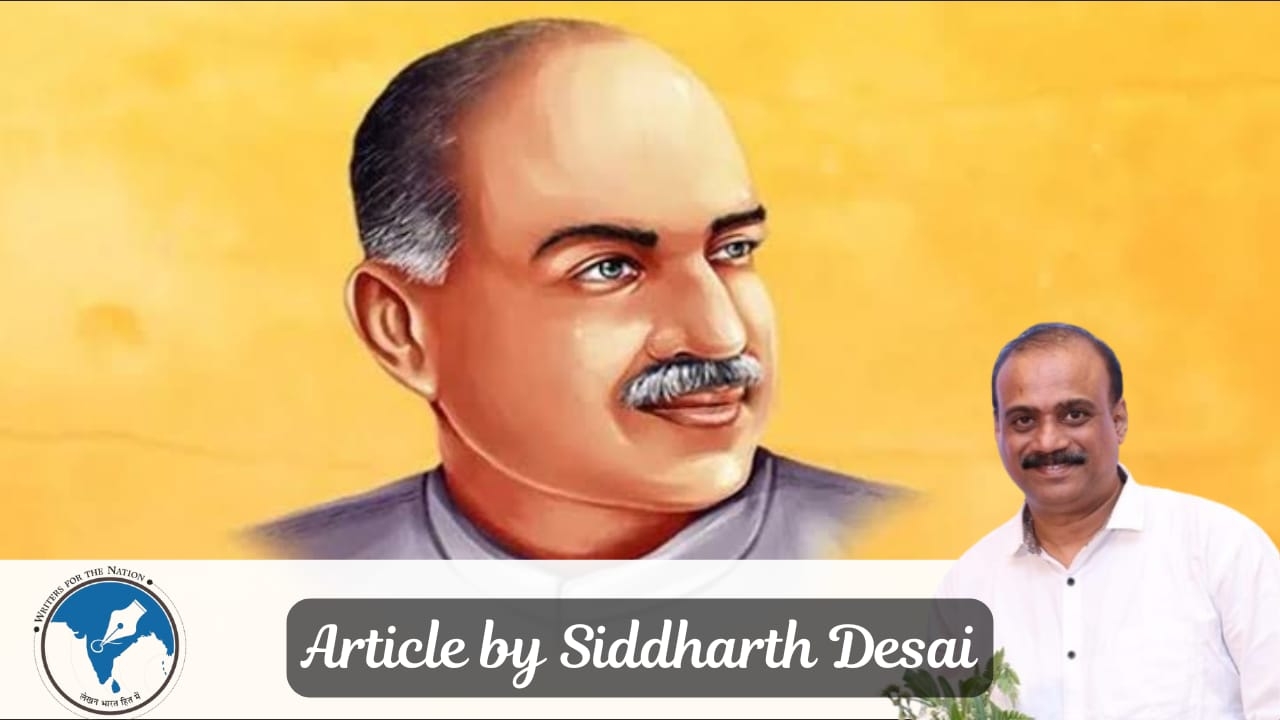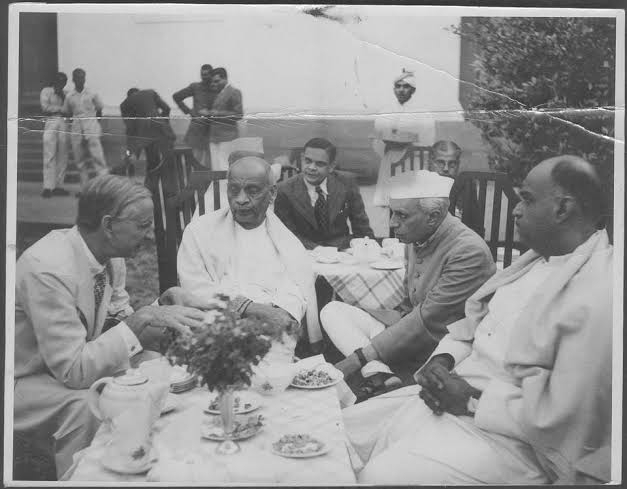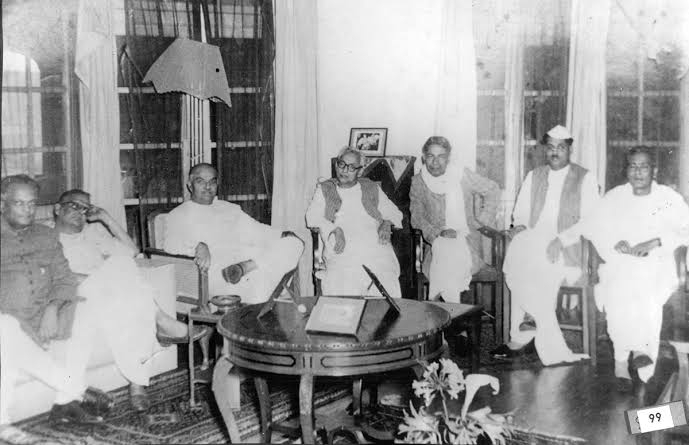हमारे महापुरुष - अंक 04: Syama Prasad Mukherjee: A Visionary Leader in India's Formative Years

After gaining independence, various political parties collaborated to guide the nation forward and instill the value of freedom among the populace. The interim government formed at the time included representatives from different parties, all of whom, despite having divergent political ideologies, shared a common goal: to lead the country on a new path. Among these leaders were individuals who remained unwavering in their nationalist ideals and sacrificed everything for the nation's integrity. Syama Prasad Mukherjee was one such figure.
Syama Prasad Mukherjee was respected not only by his supporters but also by those who opposed his views. Although his life was brief, his contributions to education, women's empowerment, and technological advancement were visionary, reflecting an understanding of the importance of public participation in national development.

Mukherjee was a distinguished educationist, a compelling orator, an experienced politician, and an adept organizer. Born on July 6, 1901, into a wealthy and prestigious Bengali family, his father, Sir Ashutosh Mukherjee, was a renowned educationist in Bengal.
Mukherjee received his early education at Mitra Institution in Bhawanipore. After passing his matriculation exam in 1914, he completed his intermediate studies at Presidency College, Calcutta, in 1916 and earned a graduate degree in English Literature in 1921. After completing his graduation, he married Sudha Chakraborty in 1922.
In 1923, Mukherjee earned his MA in Bengali with first-class honours. He passed his Bachelor of Law exam from the University of Calcutta in 1924 and enrolled as an advocate in the Calcutta High Court. In 1926, he went to England to become a barrister, returning to India after achieving this qualification.
Mukherjee's life was built on the pillars of knowledge, wealth, and development. His academic journey continued when, at the young age of 33, he was appointed Vice-Chancellor of the University of Calcutta in 1934, one of the youngest to hold such a position globally. During his tenure, he introduced several significant reforms to the university, inviting Rabindranath Tagore to deliver a convocation address in Bengali, which was unprecedented at the time.
Mukherjee's political career began in 1929 when he was elected to the Bengal Legislative Council as a Congress candidate. However, in 1938, when Congress called for a legislative boycott, Mukherjee resigned from his assembly membership and was later re-elected as an independent candidate.
In 1937, when the Krishak Praja Party and the Muslim League coalition came to power, Mukherjee became the opposition leader. He briefly served as Finance Minister in the Progressive Coalition Ministry but resigned within a year.
In 1939, Mukherjee was appointed acting president of the All India Hindu Mahasabha, and in 1940, he was elected its full-fledged president. However, following Mahatma Gandhi's assassination, Mukherjee advocated for the Hindu Mahasabha to not limit itself solely to Hindu interests and to function as a non-political organization dedicated to public service. He eventually parted ways with the organization in November 1948.

After independence, Prime Minister Jawaharlal Nehru included Mukherjee in the interim government as Minister of Industry and Supply, recognizing his political acumen, oratory skills, and expertise in parliamentary procedures. However, Mukherjee resigned from the Cabinet on April 8, 1950, in protest against an agreement between Nehru and Pakistani Prime Minister Liaquat Ali.
In October 1951, after consulting with RSS leader Madhav Sadashiv Golwalkar, Mukherjee founded the Bharatiya Jana Sangh in Delhi and became its first president. In the 1952 general elections, three members of the Bharatiya Jana Sangh were elected to Parliament, including Mukherjee. He formed a parliamentary group called the National Democratic Party, which had 32 members in the Lok Sabha and 10 in the Rajya Sabha, although it was not officially recognized as an opposition party by the Speaker of the Lok Sabha.

Mukherjee was a staunch advocate of India's unity and integrity, particularly concerning Kashmir. He was a vocal opponent of Article 370, which granted special status to Jammu and Kashmir, and viewed it as a national failure. He believed that a single country could not have two flags, two Prime Ministers, and two Constitutions. In protest against the provisions of Article 370, the Bharatiya Jana Sangh, along with the Hindu Mahasabha and the Jammu Praja Parishad, launched a Satyagraha (non-violent resistance) movement.
Mukherjee was also a critic of the permit system, which required individuals from other parts of India to obtain a permit to enter Jammu and Kashmir. In May 1953, he decided to challenge this system by entering Jammu and Kashmir without a permit. On May 8, 1953, Mukherjee, accompanied by his supporters, left for Jammu through Punjab. On May 11, 1953, he was arrested at Lakhanpur, two miles inside the Jammu and Kashmir border, and imprisoned in Srinagar Central Jail. Mukherjee died under mysterious circumstances on June 23, 1953, leading to calls for an inquiry, which the then Congress government refused.

Mukherjee's stance on Kashmir was clear and unwavering; he opposed any special privileges for Jammu and Kashmir and led movements both inside and outside Parliament to support this belief. He was firm in his conviction that India's territorial integrity could not be compromised by Pakistan's calls for "Azad Kashmir."
Whenever Syama Prasad Mukherjee's name is mentioned in the context of Indian politics, the Bharatiya Jana Sangh (BJS) inevitably comes up. The foundation of the BJS, now known as the BJP, was laid by Mukherjee. Although the Jana Sangh started with just three seats, it eventually grew to become a major political force in the country.
In the 1957 elections, the Jana Sangh won four seats, with Atal Bihari Vajpayee becoming an MP for the first time. Lal Krishna Advani later joined Vajpayee in New Delhi to assist him, and under their leadership, the Jana Sangh continued to grow. By the 1962 elections, the party's seats had increased to 14, and in the 1967 elections, it won 35 seats.
In 1968, the Jana Sangh faced a challenging period with the suspicious death of Pandit Deendayal Upadhyaya. That same year, Atal Bihari Vajpayee was elected national president of the Bharatiya Jana Sangh. In 1970, Lal Krishna Advani was elected to the Rajya Sabha. Under Vajpayee's leadership, the party won 22 seats in the 1971 Lok Sabha elections. In 1973, Advani became the president of the Bharatiya Jana Sangh.
When Jayaprakash Narayan launched a movement against the Indira Gandhi government in 1975, the Jana Sangh joined forces with other parties. However, Indira Gandhi declared a state of emergency, resulting in the imprisonment of many Jana Sangh leaders. Despite this setback, the party merged with others to form the Janata Party, which won 295 seats in the 1977 elections, leading to the formation of a government with Vajpayee as Foreign Minister and Advani as Information and Broadcasting Minister.
In the 1998 Lok Sabha elections, the BJP won 182 seats, forming a government that lasted 13 months. The party repeated this success in the 1999 elections, again winning 182 seats and forming a government under Vajpayee. Although the BJP did not win the 2004 and 2009 general elections, by 2011, the NDA, led by the BJP, was in power in nine states across India.
Finally, in 2013, the BJP projected Narendra Modi as its prime ministerial candidate, and in the 2014 general elections, the party won a decisive majority and formed the government.
Syama Prasad Mukherjee is often remembered as the founding president of the Jana Sangh and a leader of the movement for Kashmir's integration with India. However, his legacy extends beyond these roles. He made significant contributions to nation-building before and after independence, including his role in preventing Bengal from being entirely absorbed into Pakistan. When the British proposed the partition of India and Congress leaders accepted it, Mukherjee advocated for the division of Bengal and Punjab, resulting in only parts of these regions becoming part of Pakistan, thereby preserving significant portions for India.
Mukherjee's nationalism was rooted in modernity, yet it was deeply connected to tradition. He envisioned a strong, self-reliant India that could progress toward modernity while staying grounded in its cultural heritage.
As Minister of Industry and Supply in Nehru's interim government, Mukherjee laid the foundation for India's future industrial development. His tenure saw the establishment of the All India Handicraft Board, the All India Handloom Board, and the Khadi Gram Udyog, as well as the creation of the National Small Industries Corporation in 1955.
Mukherjee's life, from his family background and academic excellence to his political achievements and enduring legacy, reflects his commitment to India's unity and progress. His contributions to education, industry, and national integration have left an indelible mark on the country.
_202408051012373094_H@@IGHT_326_W@@IDTH_380.jpeg)